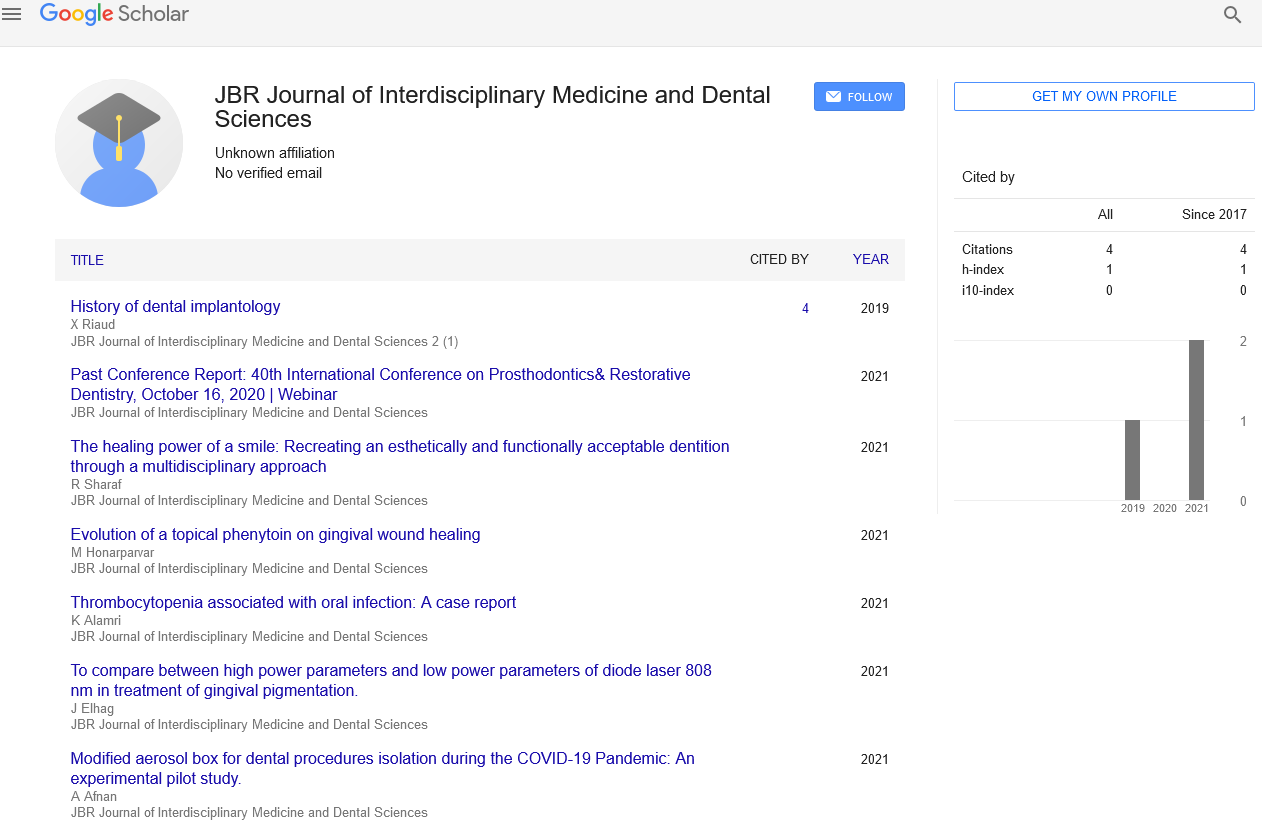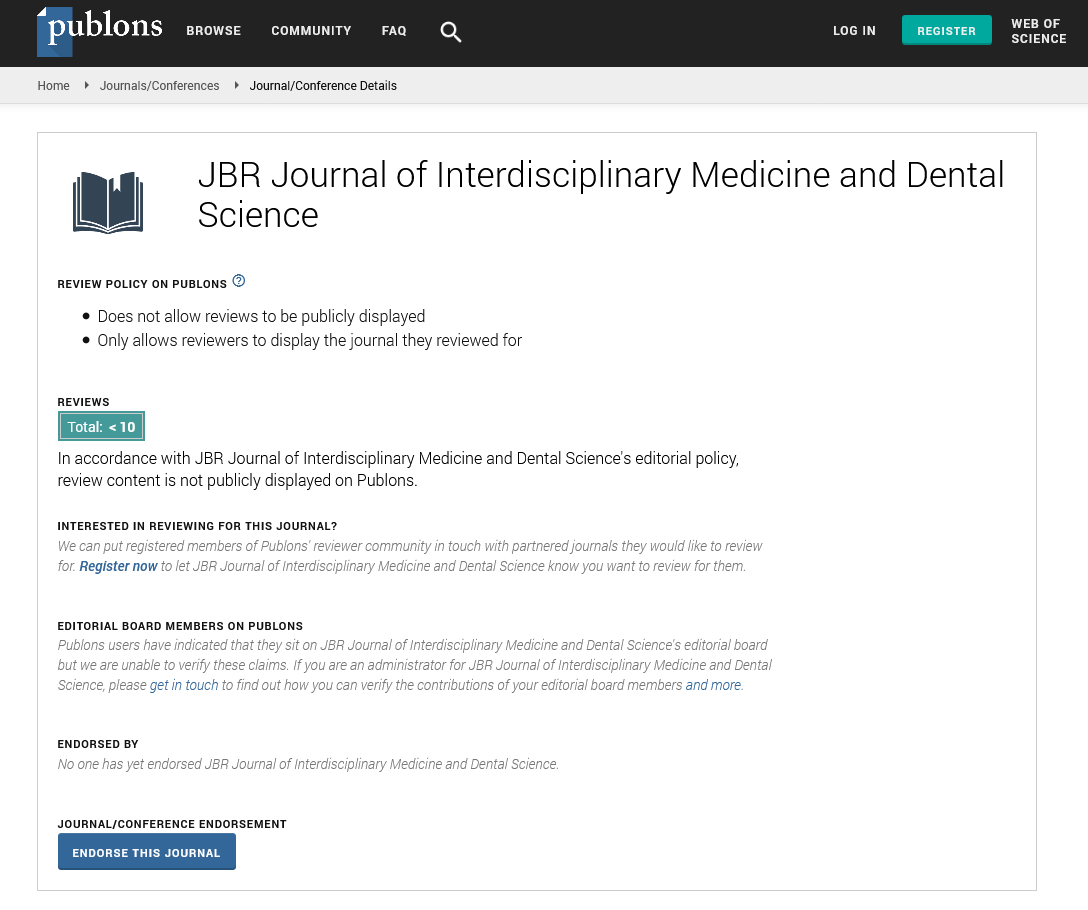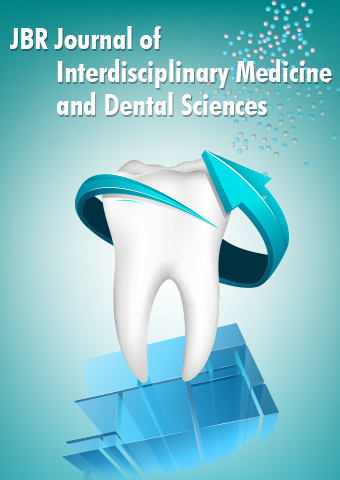Commentary - JBR Journal of Interdisciplinary Medicine and Dental Sciences (2022) Volume 5, Issue 4
Hybrid Endovascular Repair in Aortic Arch Pathologies
Wei Guo*
Department of Vascular Surgery, Clinical Division of Surgery, Chinese People Liberation Army (PLA) General Hospital and Postgraduate Medical School. 28 Fuxing Road, Beijing 100853, China.
Department of Vascular Surgery, Clinical Division of Surgery, Chinese People Liberation Army (PLA) General Hospital and Postgraduate Medical School. 28 Fuxing Road, Beijing 100853, China.
E-mail: guowei3842@yahoo.com.cn
Received: 01-Jul-2022, Manuscript No. jimds-22-31006; Editor assigned: 04-Jul-2022, PreQC No. jimds-22-31006; Reviewed: 15- Jul-2022, QC No. jimds-22-31006; Revised: 22-Jul-2022, Manuscript No. jimds-22-31006 (R); Published: 29-Jul-2022 , DOI: 10.37532/2376- 032X.2022.5(4).62-63
Abstract
Hybrid repair is increasingly evolving as an alternative option for selected patients, and promising initial results have been reported. The aim of this study was to introduce our experiences and evaluate mid-term results of supra aortic transpositions for extended endovascular repair of aortic arch pathologies. From December 2002 to January 2008, 25 patients with thoracic aortic aneurysms and dissections involving the aortic arch were treated with hybrid endovascular treatment in our center. Of the 25 cases, 14 were atherosclerotic thoracic aortic aneurysms and 11 were thoracic aortic dissection. The hybrid repair method included total-arch transpositions (15 cases) or hemi-arch transpositions (10 cases), and endovascular procedures. All hybrid endovascular procedures were completed successfully. Three early residual type-I endo leaks and one type-II endo leak were observed. Stroke occurred in three patients (8%) during the in-hospital stage. The perioperative mortality rate was 4%; one patients died post-operatively from catheter related complications. In conclusion, the results are encouraging for endovascular aortic arch repair in combination with supra-aortic transposition in high risk cases. Aortic endografting offers good mid-term results. Mid-term results of the hybrid approach in elderly patients with aortic arch pathologies are satisfying.
Keywords
aortic arch •endovascular repair• aneurysm• dissection
Introduction
The conventional surgical repair of thoracic aortic aneurysms and dissections remains a high risk procedure. Based on the eight largest recent researches published (with over 40 patients) the 30-day stroke/death rate after aortic arch surgical repair is up to 25.6% (mean 17.5%). The introduction of endovascular stent graft technology has reached an evolutionary threshold for the treatment of complex aortic diseases [1] . The aortic arch presents specific challenges to endovascular repair, which mainly arise from the involvement of the supra-aortic branches and the tight inner curve. Inoue et al. reported one case of triple-branched stengraft and Chuter and colleagues reported a branched stentgraft to the innominate artery. However, these new designs are still at an experimental stage [2]. Hybrid repair, which constitutes a combination of open supraaortic branch revascularization and endovascular aortic repair, has increasingly evolved as an alternative option for selected patients, and promising initial results have been reported.
Description
Preoperative planning was at the discretion of the operating surgeon and was based upon contrast enhanced CT scanning with 1.5 mm cuts and three-dimensional reconstruction that allowed accurate, centreline measurements of the aorta. As a prerequisite for successful stent-graft placement, a proximal landing zone of at least 1.5 cm along the curvature of the aortic arch was necessary. All patients underwent risk evaluation according to Euro SCORE guidelines. Patients who were not suitable for endografting and those at low risk for surgery were treated by open surgery. In order to distinguish from Ishimaru’s anatomical aortic classification using ante grade numbering, we propose a retrograde landing zone classification. This classification is based on pathophysiology and reflects the extension of the disease and case complexity, with respect to the need for transposition. We define four proximal landing zones as seen [3]. An endografting procedure at Zone 3 is an ideal situation and requires no surgical complementary step for both aneurysms and dissections. Starting at Zone 2 requires either coverage or transposition of the left subclavian artery (LSA). If the origin of the left common carotid artery (CCA) (Zone 1) is involved, transposition to the right CCA via a carotido-carotid bypass must be performed. We call this adjunctive procedure a hemiarch transposition. If the disease extends the full length of the aortic arch, requiring coverage of the innominate artery (IA), a bypass to the IA and left CCA is performed through a median sternotomy from the ascending aorta. Hemi-arch transposition was performed via a vertical 4 cm cervical approach to both CCAs. Then an 8 mm Dacron graft (Braun Unigraft, Melsungen) was implanted between two CCAs in a U shape anterior to the trachea [4]. The strategy of this procedure was to perform an end-toside anastomosis between the left CCA and the brachiocephalic trunk. Afterwards, an end-to-side anastomosis was performed between the LSA and the already transposed LCCA. All endovascular procedures were completed successfully. One worsening minor stroke was observed in the hemi-arch transposition group, while no neurological complication occurred in the group of total arch exclusion. During the deployment, the stent graft had not misplacement [5]. We observed three early residual type-I endoleaks (12%), which were left untreated since they may thrombose spontaneously in the post-operative course. The first residual endoleak thrombosed spontaneously and the second was successfully treated by graft extension.
Acknowledgement
None
Conflict of interest
No conflict of interest
References
- Bergeron P, De Chaumaray T, Gay J et al. Endovascular treatment of thoracic aortic aneurysms. J. Cardiovasc. Surg.44, 349–361(2003).
- Jex RK, Schaff HV, Piehler JM et al. Early and late results following repair of dissections of the descending thoracic aorta. J.Vasc.Surg. 3, 226–237(1986).
- Tabayashi K, Niibori K , Iguchi A et al. Replacement of the transverse aortic arch for type A acute aortic dissection. Ann. Thorac . Surg. 55, 864– 867(1993).
- Okita Y, Ando M, Minatoya K et al. Predictive factors for mortality and cerebral complications in arteriosclerotic aneurysm of the aortic arch. Ann. Thorac. Surg. 67, 72–78(1999).
- Jacobs M.J,de Mol BA, Veldman DJ et al. Aortic arch and proximal supraaortic arterial repair under continuous antegrade cerebral perfusion and moderate hypothermia. Cardiovasc. Surg. 9, 396–402(2001).
Indexed at, Google Scholar, Crossref
Indexed at, Google Scholar, Crossref
Indexed at, Google Scholar, Crossref


